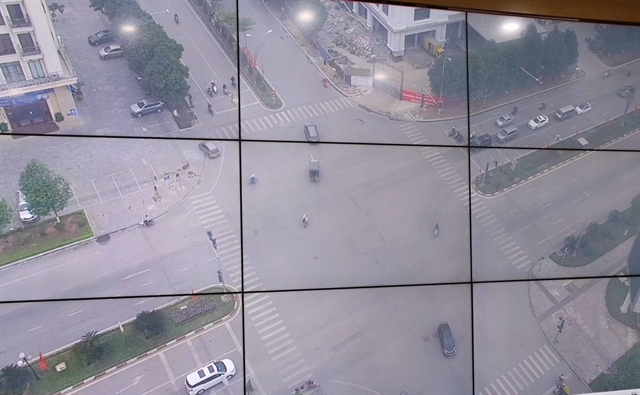 |
|
Images recorded by cameras installed on roads can help traffic police better detect violations. |
Transport violations remain common. What do you think are the main reasons?
Transport violations are still a major problem in many localities. This situation is caused by a number of reasons such as some legal documents in transport management failing to meet the real conditions while some loopholes are found in existing regulations, particularly regulations relating to the passenger transport business under the form of contract service vehicles.
Many passengers still have a habit of catching coaches along the road instead of getting on the vehicles at coach stations. Meanwhile, many coach drivers try to illegally stop and pick up passengers along the roads, particularly when there are no police officers around.
Although fines for violations are very high but in fact there are many difficulties when punishing people. The lack of human resources is an example. Many teams of the Hà Nội Transport Inspectors have only eight or nine officials while there is lack of equipment like truck scales to check trucks’ weight and as the city was expanded with a dense network of roads, it becomes a challenge for inspections. Besides, many drivers are reckless, trying to disrupt law enforcement efforts to check on overloaded vehicles and even causing danger to them.
Which measures do you think are the most effective in handling these difficulties?
I think the application of information technology in supervision, investigation, checking and punishment is the best way to reduce pressure for authorised forces while increasing the efficiency of violation punishment.
At present we have applied surveillance cameras for vehicles providing transport business services. The Decree No 10/2020/ND-CP issued on January 17, 2020 by the Government requires that all owners of the nine-seat or above transportation vehicles, container trucks and trailers must have cameras installed that can record and store images inside the vehicles when they are travelling. Surveillance cameras have also been installed along many roads to help supervise traffic activities and record violations for later punishment.
This is considered a basic foundation to enhance the efficiency of transport management and handling of transport violations at present and in the future.
Can this technology replace human resources?
I think no machine or technology can completely replace human beings. But they are effective tools in transport management activities. For example, the installation of cameras on transport business vehicles would contribute to reducing violations such as illegal stops or carrying more passengers than they are permitted to. The use of surveillance cameras to record traffic violations for later fines has helped to reduce pressure for authorised forces while bringing in high efficiency.
The application of information and technology in handling traffic violations would help to gradually raise awareness of drivers while facilitating management tasks of transport businesses and State management agencies.
It can be said that information technology is an active “supervisor” which can work 24/7 and help improve efficiency in violation detection and punishment, prevent corruption and reducing the need for human resources.
However, there are still difficulties in the application of information technology in this field such as the lack of IT human resources, financial resources and infrastructure. — VNS/KTDT
 Deputy chief inspector of Hanoi's Department of Transport Le Xuan Tien talks about the efficiency of applying information technology in handling transport violations.
Deputy chief inspector of Hanoi's Department of Transport Le Xuan Tien talks about the efficiency of applying information technology in handling transport violations.